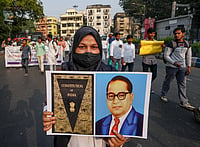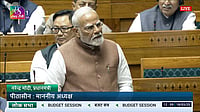
The foundation of the RSS Women’s Wing, known as the Sevika Samiti, dates back to the 1930s, marking a period of growing nationalistic activity.
Founded on Vijayadashami in 1936 by Lakshmibai (Laxmibai) Kelkar, the Samiti was established to empower women in the vision shared by RSS founder K.B. Hedgewar.
Central to its identity, the Samiti describes itself as a social and self-reliant movement, connecting its mission to broader community empowerment.
On a dusty street in Gorakhpur, women marched as part of their training. In pink and white, sevika volunteers completed a brisk route march and drew applause. This recent 15-day camp demonstrates how the Rashtra Sevika Samiti, the RSS’s women’s counterpart, utilises discipline, visibility, and service to establish its presence in public life.
The Samiti began in the 1930s. On Vijayadashami in 1936, Lakshmibai Kelkar founded it in Wardha, inspired by discussions with RSS founder K.B. Hedgewar and convinced that women were vital to nation-building. From drills and readings, the Samiti grew nationwide, blending physical training, cultural education, and community service. This builds disciplined, culturally rooted women leaders.
The Samiti holds a distinct role within the Sangh’s network. Scholars note that while the Samiti describes itself as independent, its beliefs align with Hindutva ideas about nationhood and gender. This has resulted in a distinctive approach to mobilising women, with emphasis on motherhood, cultural preservation, and public responsibility, while also preparing women for leadership in their communities. Researchers observe that this approach creates a particular, feminine view of the nation, rather than replicating the path taken by male-led organisations.
The Samiti refers to itself as a social and self-reliant movement. Its volunteers run education programs, job training, health camps, cow shelters, and literacy drives, all aimed at supporting families and villages. News reports indicate its strong local presence. Volunteers also work in schools, disaster relief, and welfare, presenting their work as both a form of social support and as a way to share cultural values.
The mix of social service and ideology is central to discussions about the Samiti’s impact. Supporters argue that it is crucial to train disciplined women leaders, especially in regions where women face limited opportunities. Others suggest that the Samiti frames feminism within traditional roles and uses its programs to advance Hindutva ideas. This ongoing discussion about empowerment and ideology illustrates how groups influence women’s roles and public engagement in Indian politics.
Consistent leadership and regular mobilisation matter to the Samiti. Leaders like the late Pramiltai Medhe, who served for decades and travelled nationwide to grow the Samiti, embodied discipline, service, and spiritual values. Following her death, national and Sangh leaders paid tribute, highlighting the Samiti’s strong ties to Hindu nationalist groups.
As India’s politics and public life evolve, the Rashtra Sevika Samiti demonstrates how women’s roles in Hindutva movements are being reevaluated. Its ongoing activities, such as training, marches, and service, offer an example of how cultural duty is used for a large-scale organisation. Some people warn that these practices could limit women’s choices, but the Samiti’s changing role shows it is a key part of how gender, discipline, and nationhood are being redefined in modern India.




























